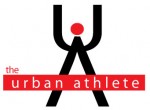Background: Testing and assessing an individual is popular. There is an old saying that if you aren’t assessing than you are guessing. The assumption here is that the tests and assessments you do are somehow relevant and meaningful yet I would suggest that the majority of tests and the information gleaned from them hardly change (10% ish) a therapeutic approach once you have heard your patients history. I can have a patient with knee pain and run them through 30 different tests and the results of those tests may hardly change my treatment. Tests have to provide us meaningful information that we can do something with.
What the hell am I talking about?
This blog post is the first of what I hope to be many posts that review the research on our physical tests of purported function. We make a lot of assumptions about the tests that we commonly use in the clinic. For example, someone might tell you that your hamstrings or psoas muscles is tight and this will cause you to be hyperlordotic (pelvic anterior tilt) during running. Or you might hear that you suck at doing a squat and without being able to squat your form during other activities will suffer. Ultimately, “failing” these tests can lead to you spending time doing lots of “corrective exercise” to fix a test. This fix is assumed to help with function in other realms of activity. I want to explore the assumptions behind the tests we use and then the purported fixes that follow. Some of the topics I might explore:
- assessing tightness in a runner and whether or interventions influence running form
- how strength training influences joint biomechanics/dynamic form
- how tests of static function relate to dynamic form (e.g. running)
- how simple dynamic tests (e.g. a squat) relate to dynamic form/joint biomechanics
- how measures of joint strength or ROM relate to dynamic form/joint biomechanics
- whether dynamic tests (e.g. a single leg squat) actually give insight into what they are supposed to be giving insight into (e.g. pelvic stability, hip abductor strength and a surrogate for hip control when running etc).
I have touched on these ideas in a number of other posts below:
- specificity of movement training (looks at our ability to change posture) (link here)
- the inability of tests to identify functional hallus limitis (link here)
- weakness of the prone hip extension (Janda) test. (link here)
So here goes with a look at a common test for runners…
The Standing on one leg balance test is not a relevant test for Runners
Whoa, quick disclaimer. This first post is an opinion as there is no evidence that specifically looks at this. However, there is plausibility and I want to make the argument that being able to balance on one leg has nothing to do with the act of running. This is a common test advocated by rehab professionals (many of whom I greatly respect and one has good book out on running biomechanics and injury here) looking to screen for deficits in function that are assumed to affect ideal running. But I just don’t see it. It makes no sense to me so if you are reading this and think I am wrong please let me know.
The one leg balance test has you simply balancing on one leg with your eyes open or closed. If you can’t do it the assumption holds that you will be prone to injuries during running or you may end up with some sort of issues with your running form. The test is based on the idea that running is merely a succession of leaps through the air interspersed with balancing on one leg until the next leap. I would respectfully suggest not. Here is my reasoning:
1. The skill of running is completely different from the skill of one legged balancing. Running is not balancing on one leg as you are not static like you are during the balance test. These two tasks are completely different. And we should not expect that one can be a surrogate for the other and reflects the same demands. Our ability to balance is activity and context dependent. I don’t think we can assume that balancing skill in one task will carryover to another completely different task. The same holds true for that crazy dead fad of doing squats on BOSUs or balance balls with the assumption that training this form of balance will carryover to the balance needs of a golfer or hockey player. The latter is from Mars and the former is from Uranus.
2. Static versus Dynamic Analogy
Running is dynamic. You do not pause and balance on one leg. Comparing one leg balance to running is like comparing the ability of a stationary top to balance on its point with the ability of a SPINNING top to balance on its point. Suggesting that we need to be able to balance on one leg in order to run safely is like arguing that in order to ride a bike properly you have to be able to hop on the bike, clip in and then balance in place without moving. I have been having my five year old do this for months before I will let her ride her bike and surprisingly she still can’t ride a bike…and that bruised little monkey hates me for it. (Obvious disclaimer: I am kidding). But this example illustrates my point. If it seems absurd on a bike then it is just as absurd on your feet.
Caveat of Ignorance
I reserve the right to change my opinion with new research or with fresh ideas. I can also be convinced to think otherwise. My mind is not as closed as my writing might indicate. As a further hedge I also recognize that it is possible that some cross sectional study might come out and suggest that one leg balance is compromised in runners with knee/ankle/back/hip pain. I don’t doubt a correlation might exist BUT this does not imply that the decrease in balance ability is the cause of the pain. This can merely be correlation.
Last, this does not mean that one leg balance training can not be beneficial for runners in preventing injuries or improving performance. The act of doing one leg squats, one leg hops, hip airplanes, front scales and other great exercises could certainly improve your balance and would also change other aspects of muscle function. In this case the improvements in balance could be secondary to other aspects of improved function that are the true drivers of improvement in performance and injury resilience.
Last point, honest- perhaps we over assess and our assessments change nothing in practice
What I think can be argued with this assessment test (along with many other tests) is that it just isn’t necessary and is plausibly not valid. If I am working with a runner or an athlete their conditioning program would be all encompassing and comprehensive. This would include exercises that ultimately improve their balance along with other variables. I don’t need a rudimentary test to tell me to add these exercises. I just need that human in front of me that tells me that they want to run and be an athlete. I don’t want to freak them out because of their shitty balance or advise against doing these wonderful exercises because they have great balance during a static, albeit not relevant to running test.




To me it seems like single leg stance is more of a foundational aspect of running. Anyone who runs should be able to control them selves on one leg. That being said, I agree that standing on one leg for a while isn’t going to help anyone do anything other than standing on one leg for a while. If we don’t waste time on over analyzing things, it can be a pretty useful snapshot of a patient’s motor control if you pay attention to how they get into and out of that stance. Just brainstorming a little, maybe an alternating march would be a more effective demonstration of coordination, timing, and overall balance. And then obviously, the important part would be figuring out what to do with those findings as well as focusing on a dynamic approach to prepare the body for dynamic movements.
Thanks Michelle,
Why not just watch them run and break that down if we want to analyze things? Mi biggest beef/question is the idea that single stance IS a foundational aspect of running. I’m not sure it is. Yes, there is a stance phase during running but we aren’t standing still. Its this movement that divorces the stance phase of running from its unrelated cousin of the single leg stance exercise. All the best,
Greg
Great article, Greg. I truly enjoy your thoughtful inquiries and insight.
The single leg balance has little motor relationship to running because of the vast differences in force vectors, impulse, elastic energy, temporal pattern, spring model, mental intention, and overall motor context. You can find elite runners who may have difficulty with a first-time balance assessment, and you can find people who can balance all day on one leg but cave during a 10K run. I think a claim of one-legged balance being “foundational” to running is akin in logic to saying that running a 10K is foundational to balancing on one leg.